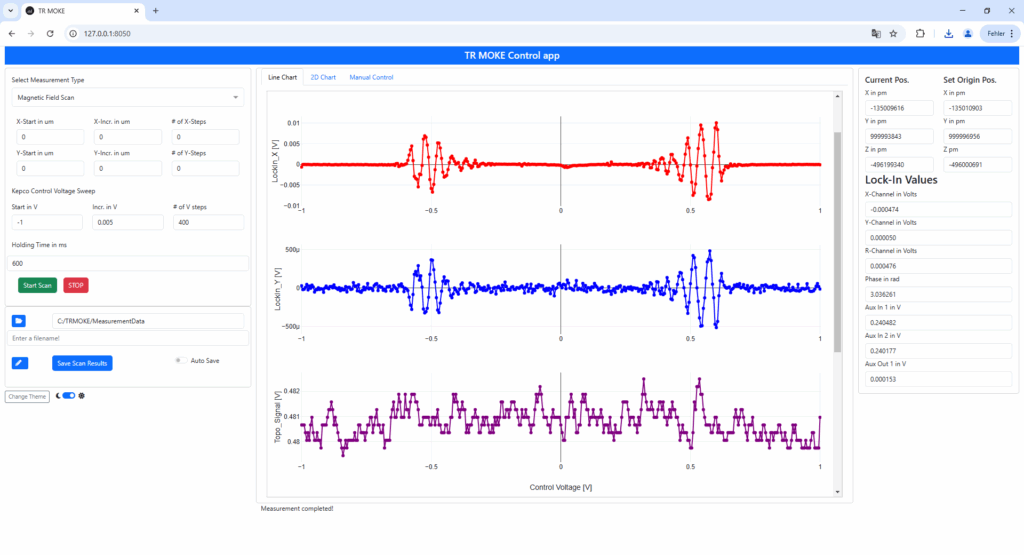How it works
Experimental Techniques to Discover Magnetization Dynamics
Magneto-Optical Kerr Effect (MOKE)
The Magneto-Optical Kerr Effect (MOKE) describes the change in polarization of light when it reflects off a magnetized material. Depending on the orientation of magnetization relative to the light’s incidence and polarization, MOKE is classified into longitudinal, transverse, and polar geometries. The Kerr rotation (θₖ) and Kerr ellipticity (εₖ) are the measurable parameters and are typically proportional to the magnetization M of the sample.
The MOKE technique allows for non-contact, surface-sensitive detection of magnetic properties with high spatial resolution.

To determine the magnetization state of a ferromagnetic or ferrimagnetic material, we utilize the Magneto-Optical Kerr Effect (MOKE). First observed in 1877 by John Kerr, this effect describes how the polarization plane of linearly polarized light rotates slightly when reflected from a magnetized surface. Specifically, Kerr noted that when light reflects perpendicularly off the polar surface of an iron electromagnet, the polarization plane is rotated in the opposite direction of the magnetizing current.
Polar- (a), transverse- (b) and longitudinal- (c) MOKE configuration. The grey shaded area indicates the plane of incidence of the linearly polarized light, indicated by the blue arrows.
time resolved – moke
TR-MOKE extends the traditional MOKE method into the time domain by using ultrafast laser pulses. A pump-probe setup is employed: the pump pulse excites the system, while a time-delayed probe pulse measures the evolution of magnetization. Alernativiely, the magnetization dynamics can be excited by measn of a microwave antenna atop the ferromagnetic sample. This enables time-resolved measurements of magnetization dynamics on femtosecond to nanosecond timescales.
TR-MOKE provides access to transient magnetic phenomena such as ultrafast demagnetization, precessional motion, and spin relaxation processes, offering insights into spin dynamics with sub-picosecond precision.
The TR-MOKE technique relies on stroboscopic measurement, enabling the detection of only coherent and repeatable magnetic phenomena. To probe spin waves in the nanosecond (GHz) time or frequency range, excitation events faster than this timescale are required. Our system supports multiple laser sources to investigate magnetization dynamics with high temporal resolution.
The figure presents a schematic illustration of a typical TR-MOKE setup: Femtosecond laser pulses enable stroboscopic measurements of coherently excited spin waves. A galvo-galvo scanner directs the laser beam across the sample surface (indicated by the dashed rectangle), or alternatively, the sample itself can be moved using a high-precision XYZ piezo stage to scan relative to the laser focus. Both scanning methods are offered.
https://nbn-resolving.org/urn:nbn:de:bvb:91-diss-20230324-1693644-1-1
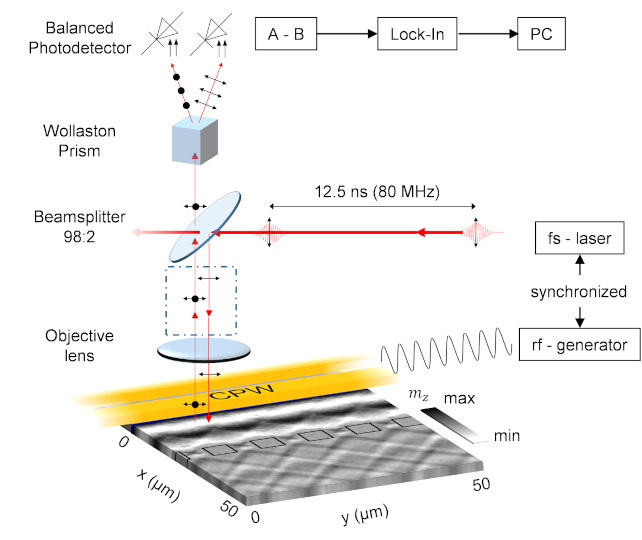
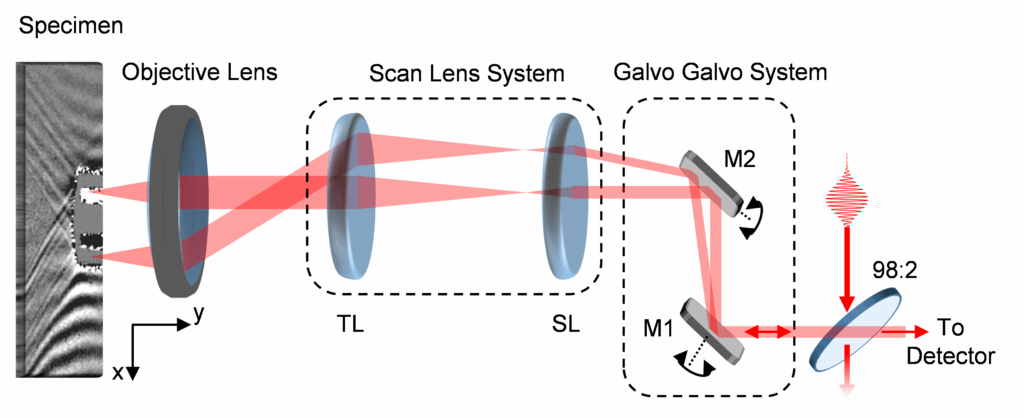
Galvo-Galvo Scanning system
Schematic overview of a Galvo-Galvo scanning system used in one of CRI²SPIN’s TR-MOKE setups: Two independent mirror galvanometers (M1 and M2) steer the incoming laser beam in two dimensions. A scan lens and tube lens—arranged in a Kepler-like telescope configuration—focus the deflected beam into the objective’s focal plane. This optical setup maintains normal incidence to the sample surface, ensuring that the incoming and reflected beam paths are identical for precise alignment and measurement.
https://nbn-resolving.org/urn:nbn:de:bvb:91-diss-20230324-1693644-1-1
Cryogenic Microscopy
Our systems support cryogenic microscopy, enabling high-resolution optical and magneto-optical measurements at low temperatures. This capability is essential for studying temperature-dependent magnetic phase transitions, quantum phenomena, and spin coherence in solid-state systems. We offer customizable sample environments with precise thermal control down to cryogenic temperatures, compatible with both TR-MOKE and fluorescence detection. These setups allow researchers to explore material behavior in conditions closely aligned with real-world quantum and low-temperature applications.
Cryogenics Time Resolved Magneto Optical Kerr Effect (TR-MOKE) is a cutting-edge technique that allows researchers to investigate magnetic phenomena with exceptional temporal resolution. By utilizing cryogenic temperatures, our TR-MOKE systems enhance sensitivity and precision in measurements, enabling detailed studies of magnetization dynamics and other critical physical phenomena. With over 20 years of experience, CRI²SPIN is proud to provide a tabletop solution that is both user-friendly and efficient, making advanced magnetic research accessible to scientists and engineers alike.
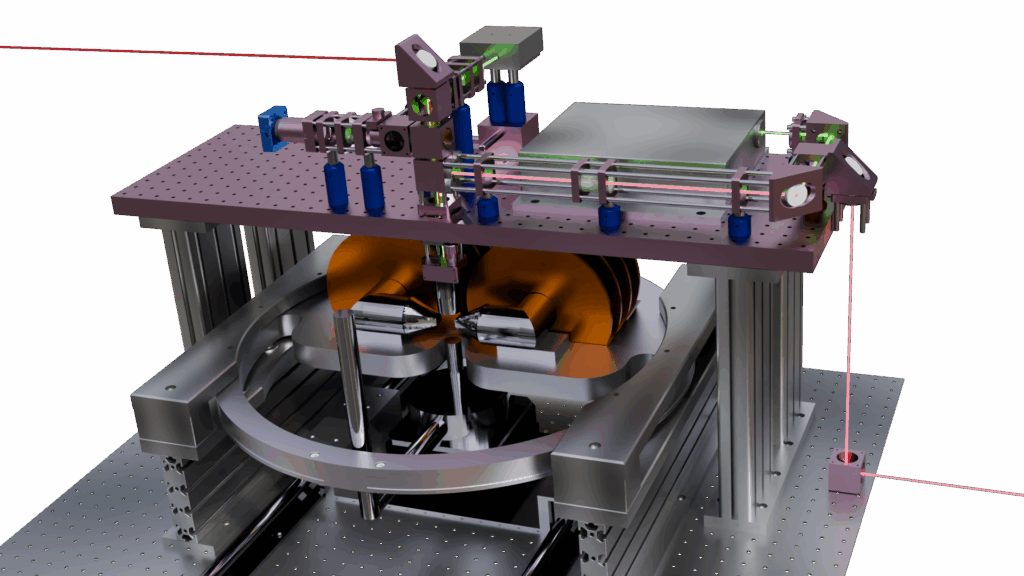
Ferromagnetic Resonance (FMR)
FMR is a technique for probing the resonant precession of magnetization in a material under an applied RF field and static magnetic bias. The magnetization vector M precesses around the effective magnetic field when the RF frequency matches the material’s natural resonance condition, governed by the Kittel equation:
f = frac{gamma}{2pi}sqrt{B(B + mu_0 M_text{eff})}where f is the resonance frequency, B is the external magnetic field, and M_text{eff} is the effective magnetization. FMR provides quantitative information on magnetic anisotropy, damping, and exchange interactions.
Inverse Spin Hall Effect (ISHE)
The ISHE is a key phenomenon in spintronics where a spin current is converted into a transverse charge voltage in a non-magnetic material with strong spin-orbit coupling. This effect enables the electrical detection of spin currents generated by spin pumping from a ferromagnetic material during FMR:
mathbf{J}_c propto mathbf{J}_s times mathbf{sigma}
Here, mathbf{J}_s is the spin current, mathbf{sigma} is the spin polarization direction, and mathbf{J}_c is the induced charge current. ISHE serves as a powerful method for detecting spin transfer and quantifying spin Hall angles.
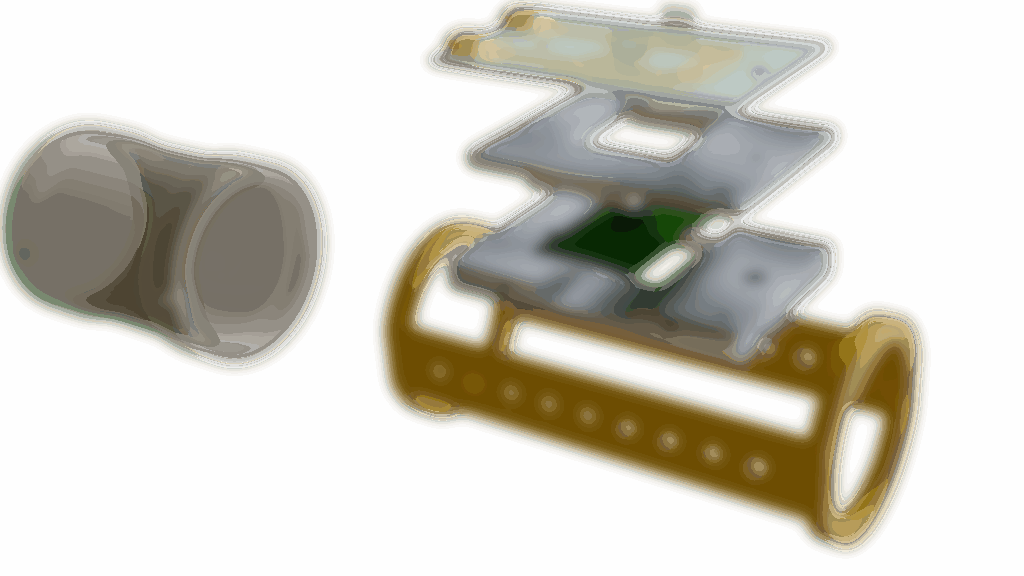
Cryogenic FMR and ISHE – Coming soon
CRI²SPIN is developing a FMR and ISHE insert for variable temperature inserts (VTI). The covered temperature range is room temperature to 4 K (details depending on the details [CR1] of the VTI used). We will offer inserts with a minimum diameter of 28 mm equipped with coplanar waveguides (CPW) for in-plane and out-of-plane FMR and ISHE measurements in the frequency range 2-40 GHz (higher frequencies and ST-FMR upon request). We use two distinct CPWs for in-plane or out-of-plane measurements which can be mounted in the same insert (in-plane to out-of-plane rotation available upon request) which are connected to two high frequency lines.
User-friendly software
Our state-of-the-art software complements all CRI²SPIN instruments, providing an intuitive interface for easy operation. The software features a graphical user interface (GUI) that simplifies the data acquisition process, making it accessible for both novice and experienced researchers. Automatic data storage ensures you never lose your valuable results, while advanced analysis tools help you interpret your findings effectively. Designed to work seamlessly with our instruments, our software enhances your research experience by streamlining workflows and improving data accuracy. Elevate your research capabilities with our comprehensive software solution.
